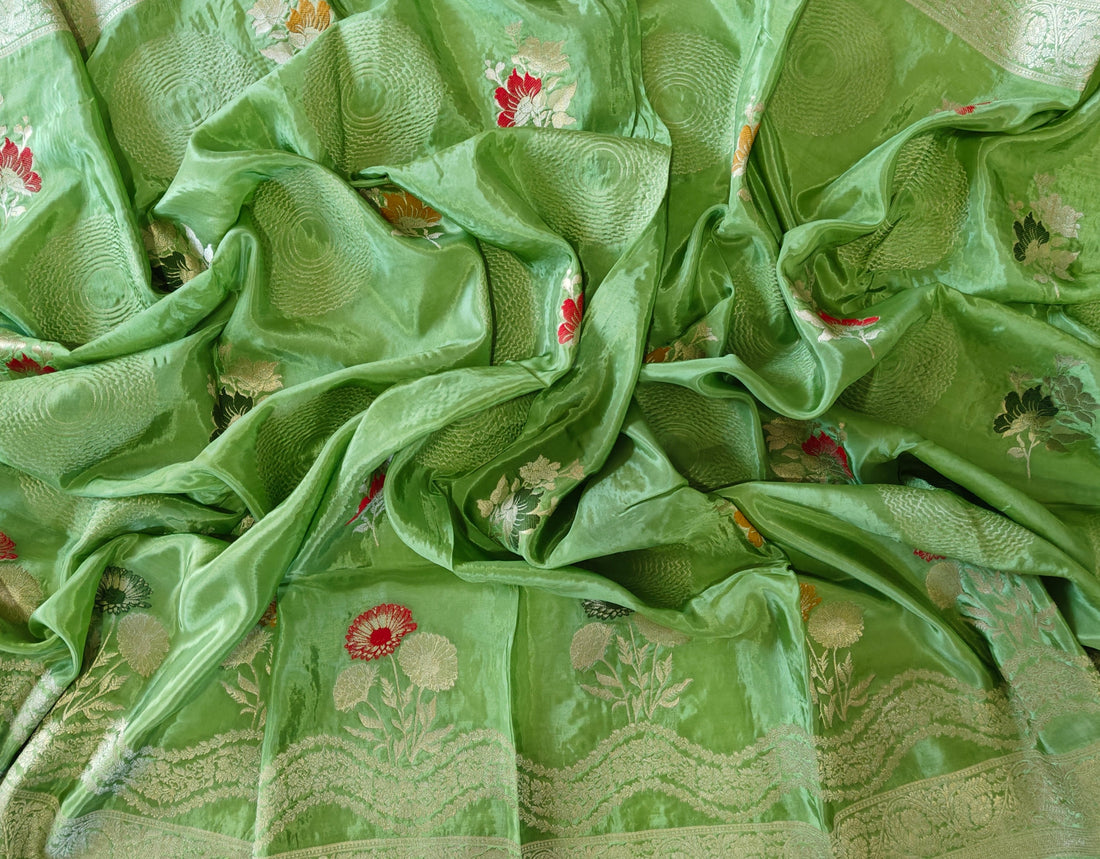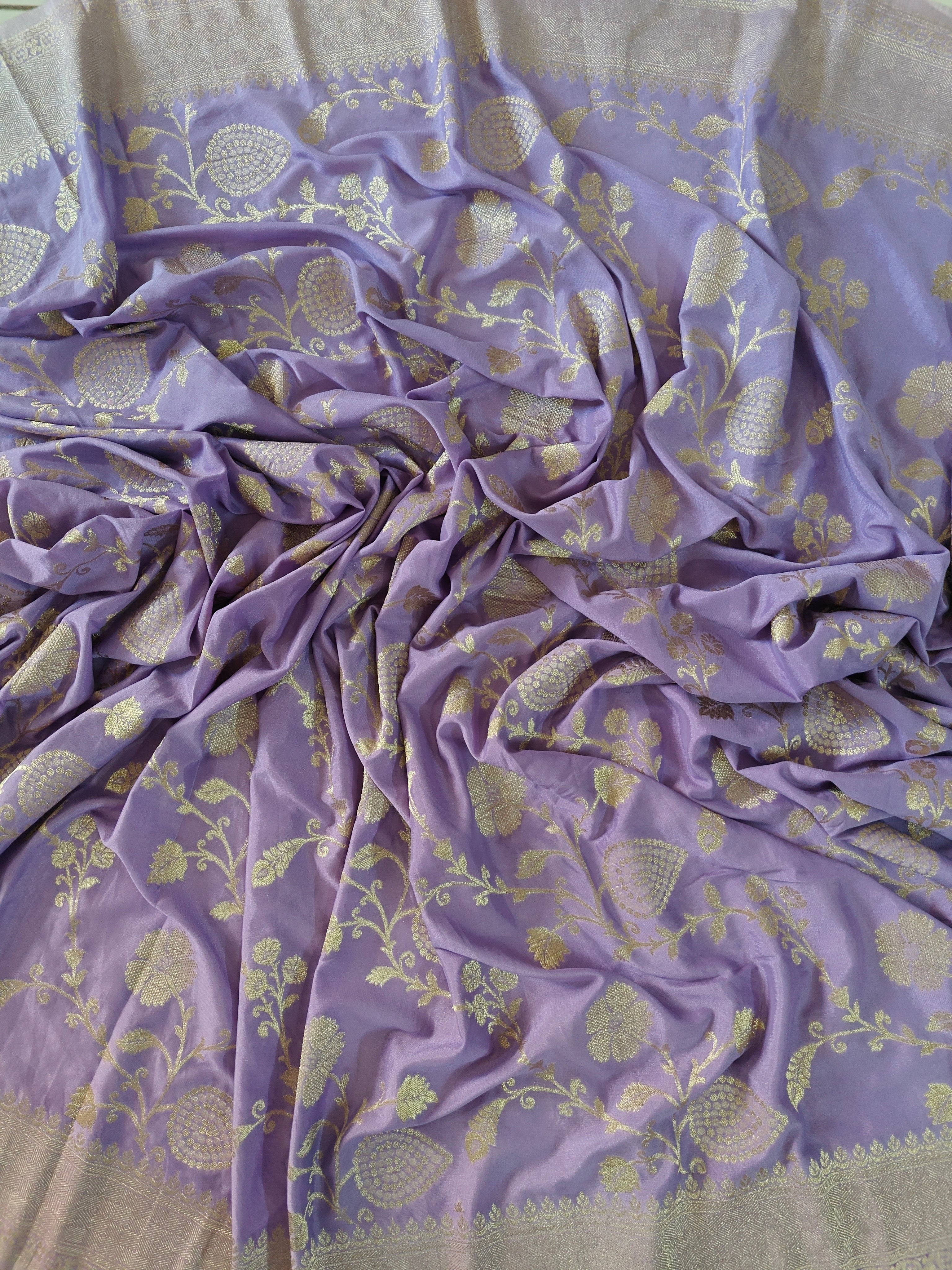
How Different Regions of India Style Banarasi Sarees
Banarasi sarees, known for their intricate weaves and luxurious fabric, have been a staple in Indian wardrobes for centuries. While originating from Varanasi, these sarees are styled differently across various regions of India. Let’s explore how different parts of the country embrace and drape Banarasi sarees in their unique way.
1. Uttar Pradesh – The Traditional Drape
Being the home of Banarasi sarees, women in Uttar Pradesh prefer the traditional Nivi drape. Paired with classic gold jewelry, a neatly pleated pallu, and a bindi, this style exudes grace and elegance, making it a favorite for weddings and festivals.
2. West Bengal – The Bengali Athpourey Drape
In Bengal, Banarasi sarees are often draped in the 'Athpourey' style, with box pleats in the front and the pallu draped over the left shoulder. Married women frequently wear a key ring (chabi guchha) at the waist, and traditional red bindis complete the look. This drape is commonly seen during Durga Puja and Bengali weddings.
3. Maharashtra – The Nauvari Fusion
Maharashtrian women sometimes wear Banarasi sarees in the Nauvari (nine-yard) drape, which resembles a dhoti-style tuck, providing comfort and ease of movement. This fusion style blends Banarasi’s elegance with Maharashtra’s heritage, often complemented with traditional jewelry like the nath (nose ring) and green bangles.
4. Tamil Nadu – The Madisar Drape
Among Tamil Brahmins, the Madisar style of draping a Banarasi saree is a popular choice for weddings and religious ceremonies. This involves wrapping the saree around both legs, resembling a dhoti, and is usually worn with traditional temple jewelry.
5. Gujarat – The Seedha Pallu Drape
Gujaratis often drape Banarasi sarees in the Seedha Pallu style, where the pallu comes from the back over the right shoulder and falls gracefully in the front. This allows intricate zari work on the saree to remain prominently displayed, making it a common choice for festive occasions.
6. Punjab – The Patiala-Inspired Styling
Punjabi women style Banarasi sarees with a contemporary twist by pairing them with heavily embroidered blouses and accessorizing with bold statement jewelry. The pallu is often pinned neatly, reflecting a mix of traditional and modern aesthetics.
7. Rajasthan – The Rajasthani Rajputana Drape
Rajasthani women style Banarasi sarees with a Rajputana drape, covering their heads with the pallu as a sign of respect and tradition. This style is particularly popular among Rajput brides, paired with Kundan jewelry and elaborate borla (maang tikka).
8. Kerala – The Kasavu Influence
In Kerala, Banarasi sarees are styled minimally, much like the Kasavu saree tradition. The pallu is often pleated and pinned over the shoulder, with simple gold jewelry accentuating the look, perfect for Onam and weddings.
9. Andhra Pradesh & Telangana – The Kaccha Drape
In Andhra Pradesh and Telangana, Banarasi sarees are sometimes draped in the Kaccha style, where the pleats are tucked at the back, allowing easy movement. This style is particularly seen during classical dance performances and temple ceremonies.
While Banarasi sarees remain a symbol of elegance, their draping styles and cultural adaptations across different regions of India make them even more versatile. Whether it’s a traditional or contemporary take, the Banarasi saree continues to be a treasured garment across generations.

